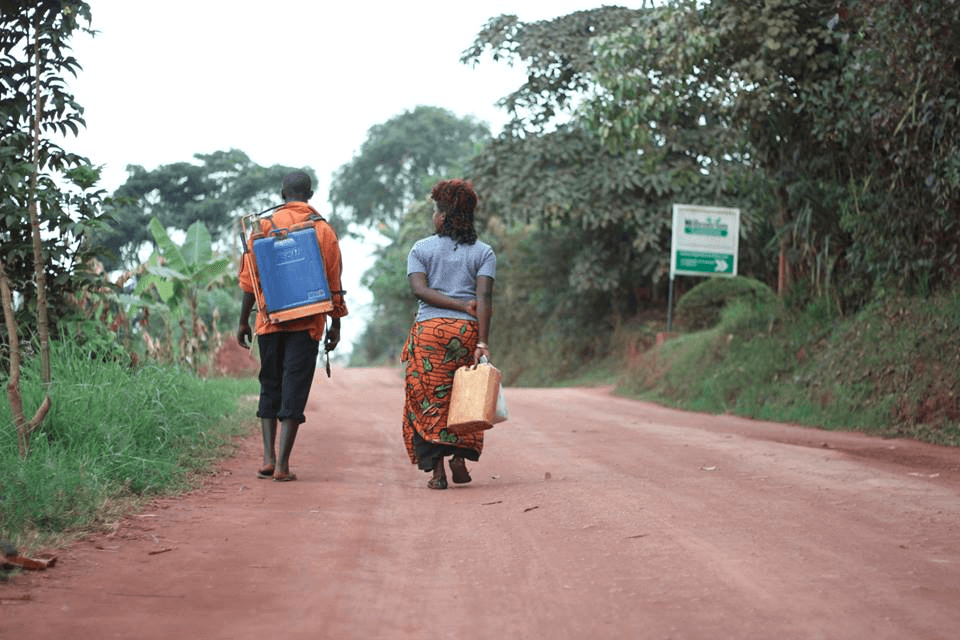By Michael Zingman
Key Statistics and Health Indicators:
Sources: WHO Uganda Statistics Summary, UNICEF Uganda Statistics, and MIT Global Health Uganda Country Briefing – Health
Total Population – ~36,346,000
Median Age – 15.7 years
Population Living in Urban Areas – 16% (Global average – 53%)
Healthy Life Expectancy at Birth – 49 years (Global average – 62 years)
Probability of Dying Between 15-60 Years (per 1000 people) – 389 male, 360 female
Population Over 60 – 3.7%
Per Capita Government Expenditure on Health (US $) – 10.4
Per Capita Total Expenditure on Health (US $) – 43.6
Total Expenditure on Health (% of GDP) – 8%
Prevalence of HIV (Adults 15-49) – 7.2%
Maternal Mortality (per 100,000 live births) – 435 (worst in Africa)
Degree of Infectious Diseases Risk: Very High
Top Food or Waterborne Diseases: Bacterial Diarrhea, Hepatitis A, Typhoid Fever
Top Vectorborne Diseases: Malaria, Plague, African Trypanosomiasis (Sleeping Sickness)
Top Water Contact Disease: Shistosomiasis
Ugandan Health Priorities
Recently, a survey report was published by the Pew Research Center’s Global Attitudes Project titled “Public Health a Major Priority in African Nations.” This survey used face-to-face interviews with people (at least 750 each) from Ghana, Kenya, Nigeria, Senegal, South Africa and Uganda. This widespread research was conducted over a one month period from March-April 2013 and has very interesting findings regarding public health priorities in each country.
Due to GlobeMed at Northwestern’s partnership with the Adonai Centre in Uganda, this article will focus on the surveys of Uganda. There, 800 adults were selected by varying regions and urbanity and interviews were conducted in seven different languages – English, Luganda, Rukiga, Luo, Lugbara, Ateso and Runyoro. The study showed that these adults thought that the most important priorities for the government include (in order of importance): building and improving hospitals and health care facilities, preventing and treating HIV/AIDS, improving access to prenatal care, improving access to clean drinking water, preventing infectious diseases, increasing child immunizations and fighting hunger. Across all countries surveyed, building and improving hospitals was the highest priority overall.
This article will focus on the two top priorities listed, hospital facilities and HIV/AIDS prevention and treatment.
First, the Uganda Ministry of Health has reported that there are 1.1 hospital beds per 1,000 people, 5.5 nurses per 10,000 people and 1.17 physicians per 10,000 people. Uganda’s healthcare performance is one of the worst in the world, ranked 186th out of 191 countries in the WHO ranking. That being said, health investment and hospital coverage have both increased dramatically over the past 5-10 years and the outlook is generally positive. Utilization has also increased tremendously as the government eliminated user fees for health facilities in 2001, causing an 80% visit increase. Potentially the greatest issue regarding healthcare in Uganda is the poor distribution and inequity of health infrastructure. In some rural areas of Uganda, there is just 1 healthcare facility per 20,000 people, as compared to 1:5, 300 in Kampala, the capital city. Also, 16 out of 80 districts of Uganda have no hospitals at all. For the rural population, skilled health personnel is lacking too. While 80 percent of births in urban areas have skilled health personnel present, the rural areas only average 38 percent. On another positive note, however, the government is now focusing on poor areas to increase health spending. That being said, it does not seem to be enough yet – the poorest 20 percent gets 24 percent of health spending, while the wealthiest 20 percent gets 17 percent of health spending. It is important to note that the government is also not the only factor in healthcare of Uganda, the private sector is also crucial. In a survey from 2006, just 29 percent of Ugandans who sought healthcare went to public facilities, which make up 71 percent of all facilities. Therefore, private clinics, drugstores and NGO facilities are getting more usage.
Second, HIV/AIDS is a huge problem in Uganda due to 7 percent of the population having this infectious disease and due to the difficulties of prevention and treatment. Uganda, however, has been extremely successful in its HIV/AIDS responses, particularly due to early action when the epidemic struck in the 1980s. The percentage of HIV cases has decreased a large amount since the 1980s – at one point they were at 29 percent in urban areas. HIV/AIDS control programs, education campaigns, free antiretroviral (ARV) sources, and outside sources of HIV/AIDS funding such as from the World Bank, the Global Fund and President’s Emergency Plan for AIDS Relief (PEPFAR) have been tremendous in these efforts. NGOs have also played a significant role in the AIDS response. Uganda’s national strategic plan has an ambitious goal of reducing HIV infections by 40 percent over five years.
Both of these health priorities – building new hospitals and healthcare facilities and HIV/AIDS treatment and prevention – highlight the largest problems facing Uganda in terms of health. At the same time, they are ones with fairly positive outlooks and the government has generally done a very good job in improving healthcare. In line with government efforts, however, nongovernmental organizations can have a key role in countries like Uganda, working with communities to improve drinking water sources, sanitation facilities, immunization coverage, education on health issues, condom use promotion, etc. Organizations like GlobeMed can lead the way in working alongside the Ugandan government to focus on these health priorities, reduce health inequities and improve the quality of life for the 36 million people of Uganda.


It’s hard to find your page in google. I found it on 13 spot, you should
build quality backlinks , it will help you to rank to google top
10. I know how to help you, just type in google – k2 seo tips